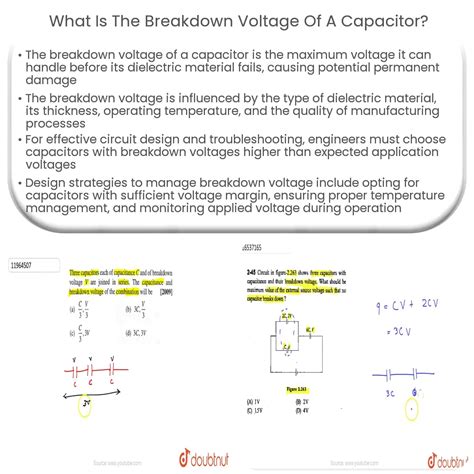Understanding Dielectric breakdown voltage
Dielectric breakdown voltage refers to the maximum voltage that an insulating material can withstand before it experiences electrical breakdown and starts conducting electricity. When the applied voltage exceeds the dielectric breakdown voltage, the insulating properties of the material are compromised, leading to a sudden increase in current flow and potential damage to the material and the connected components.
Factors Affecting Dielectric Breakdown Voltage
Several factors can influence the dielectric breakdown voltage of FR4, including:
-
Material thickness: Thicker FR4 materials generally have a higher dielectric breakdown voltage compared to thinner ones.
-
Environmental conditions: Temperature, humidity, and pressure can affect the dielectric breakdown voltage of FR4. Higher temperatures and humidity levels can reduce the breakdown voltage.
-
Frequency of the applied voltage: The dielectric breakdown voltage of FR4 can vary depending on the frequency of the applied voltage. Higher frequencies may result in a lower breakdown voltage.
-
Impurities and defects: The presence of impurities or defects in the FR4 material can lead to localized stress points, reducing the overall dielectric breakdown voltage.
Dielectric Breakdown Voltage of FR4
The dielectric breakdown voltage of FR4 is typically expressed in terms of voltage per unit thickness, such as volts per millimeter (V/mm) or kilovolts per millimeter (kV/mm). The following table summarizes the typical dielectric breakdown voltage values for FR4 based on different thicknesses:
| Thickness (mm) | Dielectric Breakdown Voltage (kV/mm) |
|---|---|
| 0.8 | 20-30 |
| 1.6 | 20-30 |
| 2.4 | 20-30 |
| 3.2 | 20-30 |
It is important to note that these values are approximate and can vary depending on the specific FR4 grade, manufacturer, and other factors mentioned earlier.
Importance of Dielectric Breakdown Voltage in PCB Design
Knowing the dielectric breakdown voltage of FR4 is crucial for designing reliable and safe PCBs. When designing a PCB, engineers must ensure that the maximum voltage present on the board does not exceed the dielectric breakdown voltage of the FR4 substrate. This is particularly important for high-voltage applications, such as power supplies, motor controllers, and lighting systems.
Designing with an appropriate safety margin is essential to account for any variations in material properties, environmental conditions, and manufacturing tolerances. A common practice is to design the PCB with a maximum voltage that is 50-70% of the FR4’s dielectric breakdown voltage. This safety margin helps prevent electrical breakdown and ensures the long-term reliability of the PCB.

Testing Dielectric Breakdown Voltage
To determine the dielectric breakdown voltage of FR4, standardized testing methods are employed. One common method is the ASTM D149 standard, which involves applying a gradually increasing voltage across the material until electrical breakdown occurs. The voltage at which breakdown occurs is recorded as the dielectric breakdown voltage.
Another method is the IPC-TM-650 2.5.6.1 standard, which is specific to the electronics industry. This method tests the dielectric breakdown resistance of the FR4 substrate by applying a high voltage between conductors on the PCB surface. The voltage is increased until breakdown occurs, and the corresponding voltage is recorded.
Enhancing Dielectric Breakdown Voltage
In some cases, it may be necessary to enhance the dielectric breakdown voltage of FR4 to meet specific application requirements. Several techniques can be employed to achieve this:
-
Increasing material thickness: Using a thicker FR4 substrate can increase the dielectric breakdown voltage, as the voltage is distributed over a greater distance.
-
Using high-performance FR4 grades: Some manufacturers offer FR4 grades with improved dielectric properties, such as higher breakdown voltages and lower dissipation factors.
-
Applying conformal coatings: Conformal coatings, such as silicone or acrylic-based materials, can be applied to the PCB surface to enhance the dielectric strength and protect against environmental factors.
-
Optimizing PCB layout: Proper PCB layout techniques, such as maintaining appropriate clearances between high-voltage traces and other components, can help minimize the risk of dielectric breakdown.
Frequently Asked Questions (FAQ)
-
What is the typical dielectric breakdown voltage of FR4?
The typical dielectric breakdown voltage of FR4 ranges from 20 to 30 kV/mm, depending on the material thickness and other factors. -
How does material thickness affect the dielectric breakdown voltage of FR4?
Thicker FR4 materials generally have a higher dielectric breakdown voltage compared to thinner ones, as the voltage is distributed over a greater distance. -
What factors can influence the dielectric breakdown voltage of FR4?
Factors such as material thickness, environmental conditions (temperature, humidity, pressure), frequency of the applied voltage, and the presence of impurities or defects can influence the dielectric breakdown voltage of FR4. -
Why is knowing the dielectric breakdown voltage important for PCB design?
Knowing the dielectric breakdown voltage of FR4 is crucial for designing reliable and safe PCBs. Engineers must ensure that the maximum voltage present on the board does not exceed the dielectric breakdown voltage of the FR4 substrate to prevent electrical breakdown and ensure long-term reliability. -
How can the dielectric breakdown voltage of FR4 be enhanced?
The dielectric breakdown voltage of FR4 can be enhanced by increasing the material thickness, using high-performance FR4 grades, applying conformal coatings, and optimizing the PCB layout to minimize the risk of dielectric breakdown.
Conclusion
The dielectric breakdown voltage of FR4 is a critical property that determines the material’s ability to withstand high electrical stress without failing. Understanding the factors that affect the dielectric breakdown voltage and designing PCBs with appropriate safety margins are essential for ensuring the reliability and safety of electronic devices.
By considering material thickness, environmental conditions, frequency of the applied voltage, and the presence of impurities or defects, engineers can make informed decisions when selecting FR4 substrates and designing PCBs. Additionally, techniques such as using high-performance FR4 grades, applying conformal coatings, and optimizing PCB layouts can help enhance the dielectric breakdown voltage of FR4 when necessary.
As the electronics industry continues to advance, with higher voltages and more demanding applications, understanding and effectively managing the dielectric breakdown voltage of FR4 will remain a crucial aspect of PCB design and manufacturing.

No responses yet